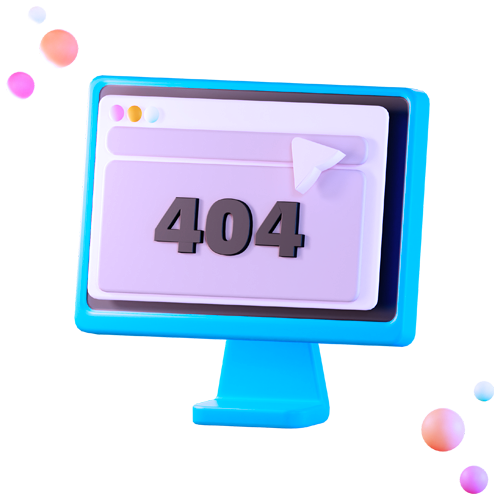Building a website, or just finished a website build?
Building a website can be an exciting time, much like getting a new office for your business or a new car. In some cases, the process can take months, and when you see the finishing line in sight all you’ll want to do is to be finished. But you might be overlooking some key components, so don’t rush yourself! This blog is designed to provide some great knowledge, directions and tips to make sure your website is SEO (search engine optimisation) friendly, which in turn will help your website rank on search engines, and get people finding you faster. It’s made for anybody who is either thinking about getting a new website made, or is in the process of building one currently. Business owners who have a website will certainly get some useful information with areas in which they can approve. So without further ado, let’s get you ranking!
Step 1. What do I want to rank for?
Before we can dive into the page optimisation or creation we need to take one step further back and get a better picture. There isn’t any point in optimising your website if you don’t know what your clients are searching for, or even what you want to be found for! The absolute best place to start getting this information is direct from the data itself. Perhaps at one point, you were running Google Ads to an old website? If so that’s a great way to identify what people were actually searching into Google and which terms historically led to conversions, this can be a great insight in what to optimise around and possibly what to avoid. Alternatively, there are a great number of free online tools that can tell you all the information you’ll ever want to know about any website, yes, even your competitors! The one I’d suggest to use is Neil Patel’s Ubersuggest. It’s an incredible tool with great insight and it’s super easy to use. When you load it up, put in a competitors URL to get some ideas with what keywords they rank for, and how much average searches it gets per month. There isn’t any point for us to rank for terms that are only searched five or six times after all. Once you’ve put in their URL, click down to ‘Keyword ideas’ to give some suggestions on what terms can be added or expanded on. An example of how that screen will look is pictured below, with eBay as an example.

By clicking on Filters in the middle of the screen it opens up lots of customisation, such as refining terms by minimum volume and general difficulty to rank. My suggestion would be to look towards the easier terms to rank and expanding out your SEO campaign from there. Even eBay had to start somewhere small. Another great tip is to find a URL from a business in the same industry as yours, but elsewhere. For example, if you were a plumber in Brisbane I’d be looking on Google to find a plumber in Sydney, this can be another great way to get ideas that your local competitors might be overlooking. Spend some time drafting up a list of what terms you want to rank for. Depending on the scale of your website I’d be suggesting anywhere from 2-3 broad terms coupled with 10-15 longer search terms, things like direct questions or suburb based searched. If we were using our plumber example some suggestions would be;
- Plumber (Broad term)
- Hot Water Repair (Broad term)
- 24/7 Plumber (Broad term)
- Emergency plumber near me (Longer search term)
- Suburb name plumber (Longer search term)
- Somebody to come and fix my drain (Longer search term)
- Full house plumbing inspection (Longer search term)
Step 2. Website Hierarchy
Now that we have some written direction of what to optimise for, we can look at how the website can piece together.  A plan is needed for Google to index your website and understand where a possible customers journey might begin and end. The picture above is something I’m sure you’ve seen before, and it’s very applicable to your website! If we use the plumber example again, let’s map out this hierarchy together.
A plan is needed for Google to index your website and understand where a possible customers journey might begin and end. The picture above is something I’m sure you’ve seen before, and it’s very applicable to your website! If we use the plumber example again, let’s map out this hierarchy together.
- Homepage
- Core services
- Suburb pages
- Contact pages
- Help/FAQ pages
We can see that we want the customers to start their journey on the homepage as that’s where the vast majority of Google searches will end up taking you. From there you need to have an idea of what the secondary level pages will be, and they will often become your core services or offering. An example below is a great showcase from RACQ with how they do this on their website.

You can see along the yellow bar at the top they showcase their core services, providing easy navigation and understanding for both people browsing your website and Google who is crawling your website. The next step is to continue that path of content through your website, moving to more specific pages as you delve deeper. With your page structure ensure you use a healthy hyperlink! The last thing Google wants to see is www.brisbaneplumber.com.au/dg84hgisegh. They want to see www.brisbaneplumber.com.au/hotwaterrepair.
Step 3. Page Content
In the SEO space, there is a great saying that content is king. Basically, it means what you say on every page of your website will be a huge factor in how you rank on Google. You need to make sure all of your pages are meeting certain criteria to ensure Google understands what it is you’re trying to say and rank for, and while Google’s algorithms are constantly updating and changing, below are the items I’ve found to play critical parts on the content of your page. All of these things are done at a surface level. SEO is largely done on the backend of the website with changing and altering metadata for your pages. That conversation is best had with either your website developer or even us! But as a starting point, below are a few simple actionable measures you can take to get ranking on Google without editing files or assets!
- Titles – If you look through this blog you can see each of the steps are titled to be bold and clear, providing an overview or invitation to understand what the content below will be talking about. Making sure you have relevancy is critical, and ideally, you want to be using the keyword you want that page to be ranking for.
- Keyword density – You can’t expect Google to show you for searches if you don’t use the terms of that search in your content! If you’re making a page and you want to be found for ‘Sydney plumber’, then make sure that term is being used on your page! You don’t need to stuff it into every sentence. Google is smart and actively knows if you’re trying to fake your content, but just be wary of it!
- Media– Include some pictures! Pure lots of text can be offputting and sometimes even intimidating. Media covers things from images to videos or even recording.
- Links – In your copy you’ll want to include a few links to other pages in your website. This helps that page hierarchy we were talking about above, as Google can see where you’re coming from and where you are going with your content. Additionally, try to include links that go to other websites, as this helps build your credibility as you’re referencing and talking about other sources.
Hopefully, you learnt something new and can use some of this information on your new (or current) website! These points are only scratching the surface of how SEO works and what it does, but they’re a great place to start. If you have any questions get in touch with us and find out how we can get you dominating Google!












